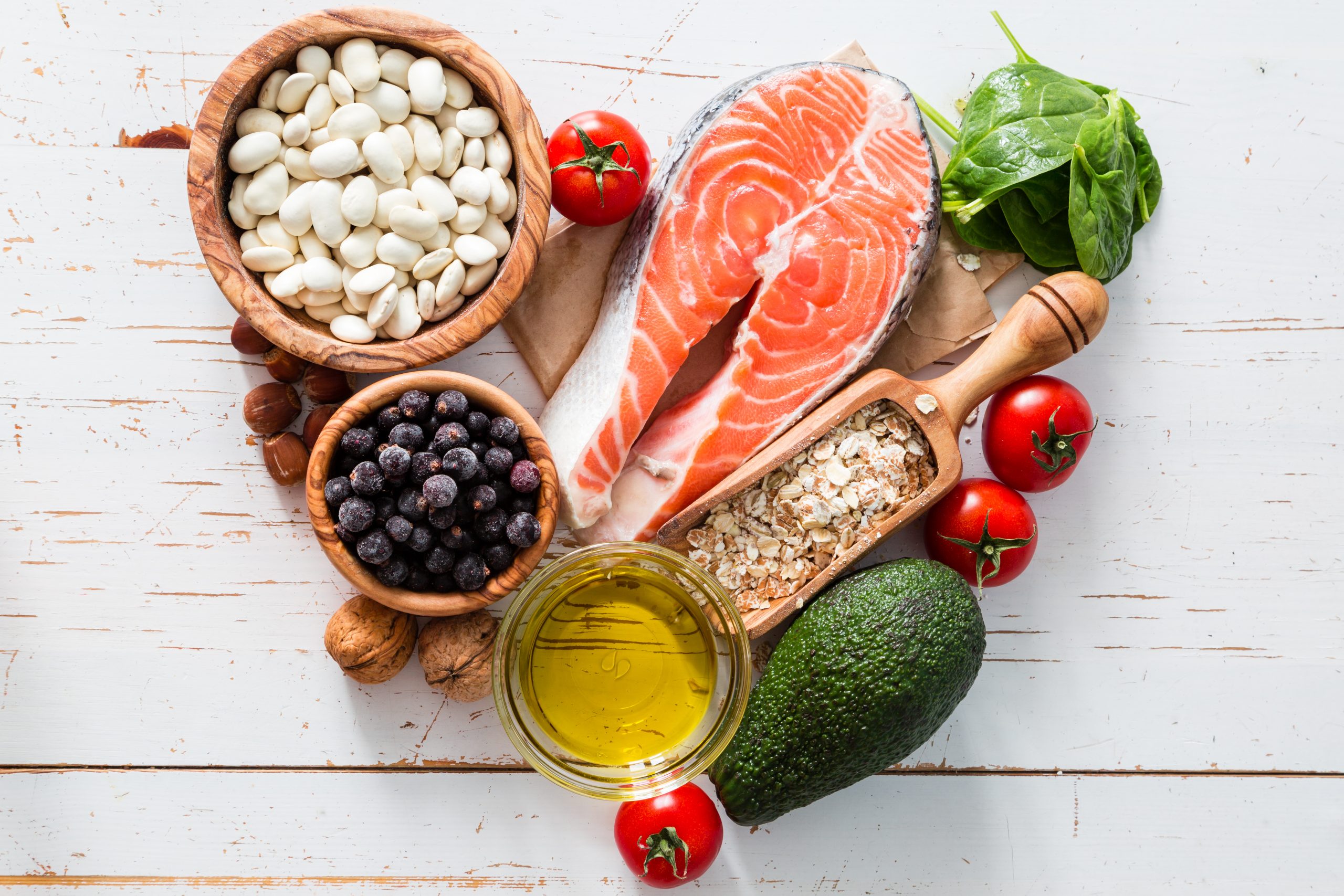
Getting to the Heart of Healthy Living
When it comes to heart health, nutrition can be one of the most effective tools in your toolbox! Studies correlate healthy eating and lifestyle habits with better cardiovascular health outcomes by means of reducing the amount of inflammation that occurs.1 Making a few small tweaks in your daily routine may help you feel better and have more favorable health outcomes in the long-run. But making changes doesn’t mean you have to sacrifice flavor or the satisfaction of foods. Let’s take a look at a few simple things that could make a huge difference in the long-run for your health.
- Go heavy on the plants
- Years of research shows us that cultures that have meal patterns that are plentiful of plant foods (i.e. fruits, vegetables, grains, beans, peas, lentils, nuts & seeds) live longer lives.2 We also know that plant-rich diets may lower the risk of heart attacks and other types of cardiovascular disease.3
- If you are eating 3 meals a day, try to get a serving of fruits and vegetables in each one. If you are able to snack, incorporate a fruit or vegetable into your snack like peanut butter and celery, hummus and carrots, or cottage cheese and pineapple.
- Consider trying a “Meatless Monday” and make a bean dish (bean, veggie and cheese whole- grain burritos comes to mind) or a vegetable stir fry to get your protein from a plant-based food.
- What’s the connection? Well, not only are you getting lots of phytochemicals (the compounds found in plant foods that protect cells from damage) and micronutrients (vitamins and minerals), but you also get a good amount of water and fiber from plant foods. Fiber helps in digestion and some plant sources like oats, barley, apples, peas, beans, citrus fruits and carrots are high in “soluble fiber” which may help lower cholesterol levels.
- Make the switch to whole grains
- Did you know that whole grains provide significantly more nutrients than refined grains!? Fact: A whole grain contains 3 components of a grain “kernel,” the bran, endosperm and germ. Refined grains, like white bread made from white flour, or white rice, are missing at least one component of the kernel. Vital nutrients are often lost in the process. You may have heard of the benefits of potassium with heart health. Well, a refined wheat flour has about 29% the amount of potassium than what whole wheat flour provides.4
- Make most of your grain products whole grains. You never know, you may even like the nutty flavor of whole grains. Try brown, colored and wild rice, corn, oats, quinoa, barley and whole grain breads, pastas, tortillas or crackers.
- Choose your fats wisely
- Surely it’s no surprise that some fats are better than others. The reason is that saturated fats, which are mostly animal-based or found in processed foods, can lead to cholesterol buildup in your heart and arteries. Whereas unsaturated fats, which are plant-based, can reduce the risk of heart disease.5
- Make a simple change for your heart health. When you are using fats in food preparation at home, go for olive, canola, peanut, sunflower, or safflower-based oil. Look for soft-tub margarines that are made with these oils instead of butter or stick margarine for adding flavor or moisture to products.
- Choose leaner red meats. Look for meats with reduced marbling and total fat percentages. Choose cuts like the eye of round roast, tri-tip roast, top sirloin filet, chuck tender roast, sirloin tip side roast, tenderloin roast, flank steak, strip steak. Aim for at least 90% lean ground beef or game meats. Try lower fat alternatives to pork sausage, like turkey sausage.
- Use skinless poultry and prepare roasted, rather than fried.
- Swap out fish for meat a couple times a week
- Speaking of fat- cold, deep-water swimming fish are great sources of anti-inflammatory Omega-3’s. The 2020-2025 Dietary Guidelines for Americans recommend incorporating 8 oz of fish into your diet every week.6 Here are some lower mercury seafood options: black sea bass, catfish, cod, haddock, hake, herring, mullet, perch, pollock, salmon, tilapia, freshwater trout and tuna.
- Shake up the flavor, not the salt!
- Did you know that 45% of adults ages 18 and older have hypertension in the US? Keeping sodium intake to 2,300 mg a day or less could help improve your blood pressure and reduce your risk of cardiovascular disease.6
- Avoid using the salt shaker and consider using herbs, spices, vegetable-based broths or vinegar to flavor food. Try a no-salt-added spice blend to add flavor.
- Use the food label to guide you. Try to keep snacks to less than 200 mg sodium and meals to less than 600 mg sodium.
All-in-all, focusing on whole foods and balanced meals will keep you full and can reduce the amount of discretionary calories that you eat. Filling your plate with plant foods and lean proteins with little added sodium can help protect your heart and keep you satisfied!
REFERENCES:
1 https://www.ncbi.nlm.nih.gov/pmc/articles/PMC6320919/
2 https://www.ncbi.nlm.nih.gov/pmc/articles/PMC3412743/
3 https://www.heart.org/en/news/2021/08/04/eating-a-plant-based-diet-at-any-age-may-lower-cardiovascular-risk#:~:text=For%20adults%20both%20young%20and,of%20the%20American%20Heart%20Association.
4 https://wholegrainscouncil.org/whole-grains-101/whats-whole-grain-refined-grain
5 https://www.health.harvard.edu/staying-healthy/the-truth-about-fats-bad-and-good
6 https://www.dietaryguidelines.gov/sites/default/files/2021-03/Dietary_Guidelines_for_Americans-2020-2025.pdf pp. 20, 29, 102
Latest Posts
February is American Heart Month!
Learn more about American Heart Month by visiting these resources:
